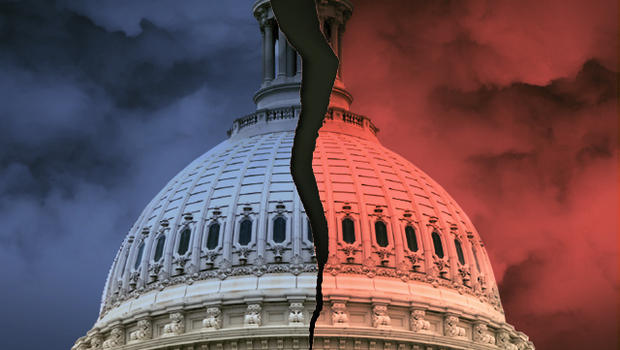Last Tuesday, Arizona Senator John McCain gave a heartfelt speech, calling Congress to “work collaboratively to ensure the Senate discharged its constitutional responsibilities effectively,” and suggested that the Senate return to its traditions and customs in terms of legislating. According to a Gallup poll, Congress’ approval rating is at 20%. While this is a slight increase from early 2017’s 18% approval rating, it is devastatingly low compared to the 84% approval rating of October of 2001, the highest rating in the past 20 years [1]. Do not be fooled; Congress is capable of more. Currently, the most common complaint is Congress is getting nothing done. John McCain himself alluded to this very issue on the Senate floor. But what does “getting something done” mean? Does it mean passing legislation to make sweeping changes with the swipe of a pen? The senator answers this question as well.
“Just plain muddling through to chip away at problems and keep our enemies from doing their worst isn’t glamorous or exciting. It doesn’t feel like a political triumph. But it’s usually the most we can expect from our system of government, operating in a country as diverse and quarrelsome and free as ours.” Essentially, the answer is no. Within this statement lies the most critical lesson in his speech: Congress is a legislative body meant to debate and deliberate on legislation before passing laws that make improvements and adjustments. The idea that the majority party should push through divisive and polarized legislation has effectively destroyed the legislative process and has further divided constituents. In other words, Congress’ attempt to act quickly has increased gridlock and polarization.
When the Constitution was first seeking ratification, James Madison and Alexander Hamilton wrote a series of essays known as the Federalist Papers under the pen name Publius, to explain why the Constitution and the governmental structure it proposed was necessary for the union’s survival. In it, they explain and defend each branch of government. In Federalist 62, Publius explains that the Senate’s purpose is not to “yield to the impulse of sudden and violent passions, and to be seduced by factious leaders into intemperate and pernicious resolutions.” It is instead…a body which is by a tenure of considerable duration”[2]. In other words, Congress was and is still meant to be a deliberative body. It was never meant to act quickly.
The vendetta: Quality v. Quantity
While it is easy to measure congressional success by the number of bills passed into law, it is important to remember that partisan legislation that is passed through Congress without deliberation is ultimately worse than no legislation at all. Effective law making requires the legislative process such as going through committee and using contributions from both sides. In his speech John McCain indicted both parties for excluding the other party. He used the example of the Democrats shutting the door on Republicans during the healthcare discussion eight years ago and further excoriated Republicans for repeating this offense with their own healthcare bill. These divisive actions have further divided constituents. A 2016 Pew research study reported that 55% of Democrats and 49% of Republicans say the other party makes them “afraid”[3]. Policies created without deliberation from both sides such as Obamacare and the failed replacement, have created this political divide.
Opposition might suggest that partisanship is the nature of politics and it is up to the majority party to pass legislation while they can; however, whenever power inevitably transfers, Congress revisits old legislation in order to have their voices finally heard. And thus, the vicious cycle continues and the gap widens. Each party is “afraid” of the other because they have proved to be incapable of deliberation and compromise. The good news is a small few Republicans countered this by voting “no” on repealing Obamacare this past Thursday without an adequate replacement strategy, just as McCain suggested [4]. While this is a step in the right direction in terms of bipartisanship, more needs to be done to promote future compromise and deliberation.
The Plan going forward:
Under the Obama administration, a bipartisan group of senators that became known as “the Gang of Eight” consisting of four Republicans and four Democrats, was criticized by both parties for attempting to work together to pass immigration reform. Bipartisanship was widely unaccepted under the Obama administration and this administration appears to be no different. On twitter, President Donald Trump suggested that the Senate “must immediately go to a 51 vote majority, not senseless 60” in order to pass future legislation. While the President may suggest that this would speed up the legislative process, this would actually create more polarity in the Senate and create more animosity. He would essentially bypass Democrats and eliminate the need to be bipartisan, thus perpetuating the vicious cycle of inadequate and divisive legislation that would again be revisited by the future majority party. In a world where we adopt the President’s suggested policy, the focus is on past legislation creating one lame duck Congress after another. Congress must return to deliberation and compromise, even if it slows down the immediate legislative process. Ultimately, more effective legislation will be passed in the process and the focus can be placed on new legislation.
What Can you do to help?
The most important step you can take to promote bipartisanship is educate yourself on the legislative process and the powers of congress. A link to a summarized version of the Federalist Papers and Article I of the Constitution for more information on how the framers intended Congress to operate is below [5]. Additionally, it is critical that when electing a member of Congress, we the people change the conversation from individual issues to Congressional function and performance. Is the candidate prepared and willing to engage in debate and deliberation? Is the candidate open to compromise? These are the most important questions to ask in the election process.
We must hold elected officials accountable. An article written by Molly E. Reynolds at The Brookings Institution, a nonprofit public policy organization, explains indicators of a dysfunctional institution [6]. Keep in mind that passing more legislation is not necessarily a sign that Congress is functioning. A functional Congress is one that is taking time to deliberate in order to pass effective legislation. Rather than focusing on individual issues, focus on how well Congress is functioning as a whole. 2017 has seemingly ended political apathy; people are becoming more involved than ever. This momentum could potentially perpetuate the divide, or it could encourage political action and generate tangible results. Remember, differences of opinion are normal in a democracy. Be able to engage in the conversation and debate and perhaps Congress will, in the words of John McCain, “try the old way of legislating in the Senate, the way our rules and customs encourage us to act. If this process ends in failure, which seem likely, then let’s return to regular order.”
References
[1] Gallup, I. (2017). Congress and the Public. [online] Gallup.com. Available at: http://www.gallup.com/poll/1600/congress-public.aspx [Accessed 30 Jul. 2017].
[2] Hamilton, A., Jay, J., Madison, J. and Kessler, C. (2014). The federalist papers. New York: Signet Classic.
[3] Pew Research Center for the People and the Press. (2017). Partisanship and Political Animosity in 2016. [online] Available at: http://www.people-press.org/2016/06/22/partisanship-and-political-animosity-in-2016/ [Accessed 30 Jul. 2017].
[4] http://www.nbcnews.com/politics/congress/senate-set-vote-straight-repeal-obamacare-n786691
https://constitutioncenter.org/interactive-constitution/articles/article-i
[6] Reynolds, M. (2017). How to measure a dysfunctional, gridlocked Congress. [online] Brookings. Available at: https://www.brookings.edu/blog/fixgov/2016/06/28/how-to-measure-a-dysfunctional-gridlocked-congress/ [Accessed 2 Aug. 2017]




